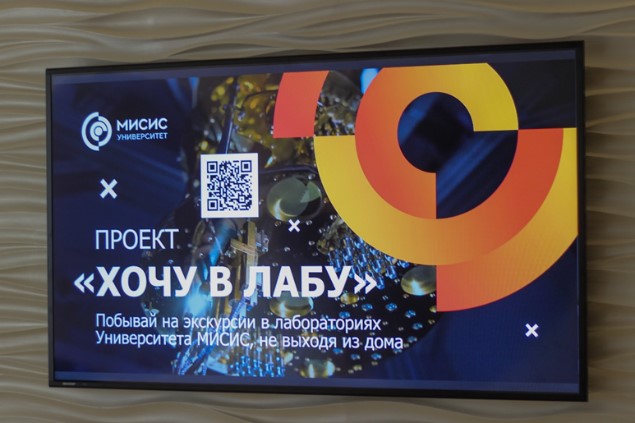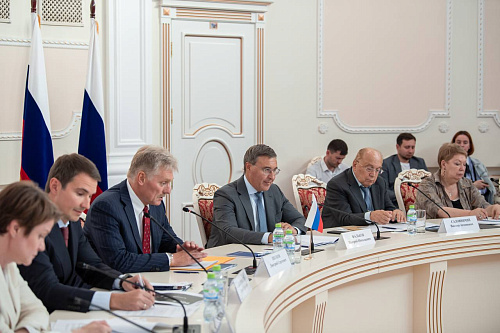The “I Want to Get to the Lab” Project Opens Doors for Future Scientists
24th of August 2023

In 2022, the “Best Student Project About Science” category at the All-Russian Award "For Fidelity to Science" attracted the highest number of applications. Among the top three finalists was the #IWANTTOGETTOTHELAB project, initiated by the Student Scientific Society of the MISIS University of Science and Technology. Here, we’ll dive deeper into this remarkable project.
#IWANTTOGETTOTHELAB is a series of video tours where researchers from MISIS showcase the university’s most fascinating laboratories and research centers, highlighting the work conducted there and the opportunities available for students.
The idea for the video series emerged during the COVID-19 pandemic when in-person tours became impossible. The shift to an online format allowed the project to thrive in multiple areas.
Firstly, prospective students from all over Russia were given the chance to explore cutting-edge laboratories and research centers without leaving their homes.
Secondly, the project allowed current MISIS students and researchers to learn about the work of their colleagues and familiarize themselves with the infrastructure of neighboring labs.
Thirdly, by sharing their stories, laboratories and research centers can attract new undergraduate, graduate, and doctoral students as well as research staff.
Alexander Chubrik, the curator of the Student Scientific Society at MISIS and an engineer at the Biomedical Engineering Research Center, along with Olga Zaviktorina, Head of the Online Communications Department at MISIS, revealed some behind-the-scenes details about creating these virtual tours.
Each video typically lasts between 3 and 6 minutes. Most of the production time is spent creating the script. The researchers prepare their speeches in advance so they can record efficiently in just a few takes. An interesting tidbit: many of the researchers had never worked in front of a camera before, making this a new experience where they may discover unexpected skills. The filming crew consists of four people, each with their own specific tasks, allowing the team to film an episode in just 1-2 hours. After that, the editing and processing take place, then the final video is released. So far, 19 laboratories - about half of the research centers at the university - have participated in the project. Communication with other labs is underway, so more videos are expected to be released soon.
In addition to the video tours, the project team has created a special application form for those interested in interning or working at a particular lab. Potential candidates are encouraged to check the application requirements as well, as they may need to brush up on certain subjects before applying.
To make it easier for students to discover the opportunities of MISIS, screens and televisions throughout the university broadcast videos and posts with QR codes for quick access to the project’s website.
Chubrik encourages students to get involved in scientific research early in their academic careers: “Many students only start looking for something before their thesis. But the labs offer a great opportunity to practice and meet potential research advisors early on.” He also shared his thoughts on participating in the “For Fidelity to Science” award: “These competitions are very important to understand how valuable and relevant your project is, and whether it resonates with people. The jury is excellent. If you have a chance to participate and showcase your ideas, why not take it?”
Remember, you can apply for the IX All-Russian Fidelity to Science Award until September 12, 2023, at the following link: https://zavernostnauke.ru.
Text by Veronika Prikhodko, journalism student at Lomonosov Moscow State University.
#IWANTTOGETTOTHELAB is a series of video tours where researchers from MISIS showcase the university’s most fascinating laboratories and research centers, highlighting the work conducted there and the opportunities available for students.
The idea for the video series emerged during the COVID-19 pandemic when in-person tours became impossible. The shift to an online format allowed the project to thrive in multiple areas.
Firstly, prospective students from all over Russia were given the chance to explore cutting-edge laboratories and research centers without leaving their homes.
Secondly, the project allowed current MISIS students and researchers to learn about the work of their colleagues and familiarize themselves with the infrastructure of neighboring labs.
Thirdly, by sharing their stories, laboratories and research centers can attract new undergraduate, graduate, and doctoral students as well as research staff.
Alexander Chubrik, the curator of the Student Scientific Society at MISIS and an engineer at the Biomedical Engineering Research Center, along with Olga Zaviktorina, Head of the Online Communications Department at MISIS, revealed some behind-the-scenes details about creating these virtual tours.
Each video typically lasts between 3 and 6 minutes. Most of the production time is spent creating the script. The researchers prepare their speeches in advance so they can record efficiently in just a few takes. An interesting tidbit: many of the researchers had never worked in front of a camera before, making this a new experience where they may discover unexpected skills. The filming crew consists of four people, each with their own specific tasks, allowing the team to film an episode in just 1-2 hours. After that, the editing and processing take place, then the final video is released. So far, 19 laboratories - about half of the research centers at the university - have participated in the project. Communication with other labs is underway, so more videos are expected to be released soon.
In addition to the video tours, the project team has created a special application form for those interested in interning or working at a particular lab. Potential candidates are encouraged to check the application requirements as well, as they may need to brush up on certain subjects before applying.
To make it easier for students to discover the opportunities of MISIS, screens and televisions throughout the university broadcast videos and posts with QR codes for quick access to the project’s website.
Chubrik encourages students to get involved in scientific research early in their academic careers: “Many students only start looking for something before their thesis. But the labs offer a great opportunity to practice and meet potential research advisors early on.” He also shared his thoughts on participating in the “For Fidelity to Science” award: “These competitions are very important to understand how valuable and relevant your project is, and whether it resonates with people. The jury is excellent. If you have a chance to participate and showcase your ideas, why not take it?”
Remember, you can apply for the IX All-Russian Fidelity to Science Award until September 12, 2023, at the following link: https://zavernostnauke.ru.
Text by Veronika Prikhodko, journalism student at Lomonosov Moscow State University.



